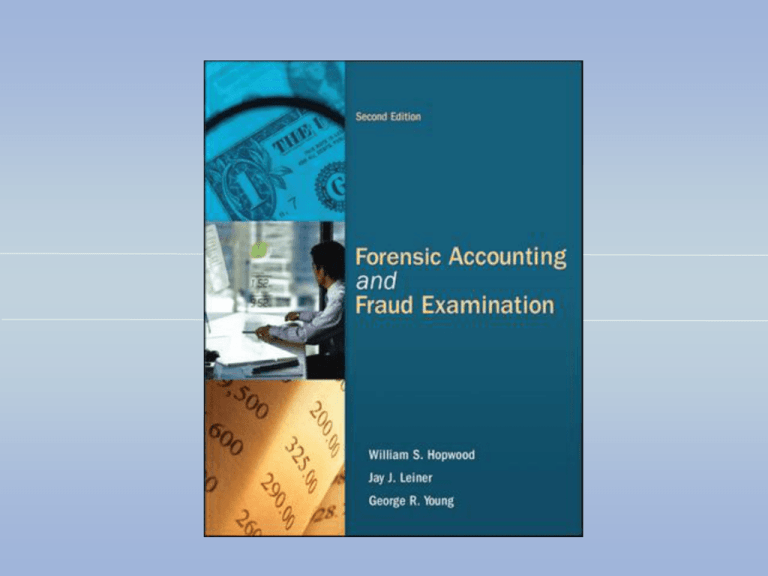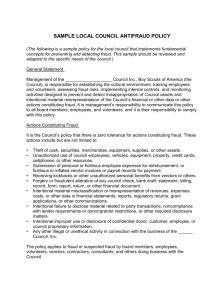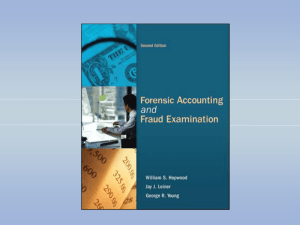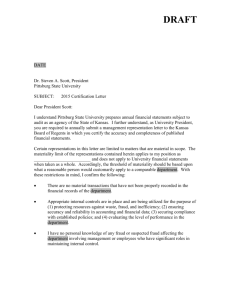
7-1
7-2
07
The Fraud Investigation and
Engagement Processes
McGraw-Hill/Irwin
Copyright © 2012 by The McGraw-Hill Companies, Inc. All rights reserved.
7-3
The Fraud Investigation
Process
The
fraud investigation process involves systematically
gathering and reviewing evidence for the purpose of
documenting the presence or absence of fraud.
7-4
The Fraud Investigation
Process
The
engagement process: the series of steps that begins
with the investigator’s first contact with the case and
concludes with a complete agreement regarding the fraud
investigation.
The evidence collection process: the various steps in which
evidence in support of the objectives and scope of the
investigation is collected.
The Fraud Theory
Approach to
Evidence Collection
7-5
Four Types of Evidence
7-6
The Fraud Engagement
Process
The
fraud engagement process begins with the
investigator’s first contact with the case and ends with a
complete agreement regarding the services the fraud
investigator will provide.
7-7
The Incident Report
Includes
the initial information used to justify the
investigation
The
initial information should be included in a unified case file
The incident report can serve as probable cause for law
enforcement
The incident report can provide proof that the suspect is not
being singled out because of illegal discrimination or in
violation of collective bargaining rights
7-8
Consider Legal Issues
Consider
rights of workers or other suspects
Consider the possibility of conducting the investigation
under attorney-client privilege
Evaluate the evidence and consider whether there is
sufficient legal justification to fire a worker or place a worker
on administrative leave
Consider the rights of investigating employers
Consider the extent to which a government entity might be
involved in the investigation
Consider reporting obligations
7-9
Evaluate Loss Mitigation and
Recovery Considerations
Immediate
Loss mitigation options: (1) immediately fire the
employee, (2) change the employee’s job responsibilities,
(3) place the employee on administrative leave (with or
without pay), or (4) permit the employee to continue in her
current position, possibly continuing the fraud, thus giving
the investigator the possibility of catching her in the act.
Insurance recovery
Recovery through litigation
The objectives, scope, and costs of the investigation
7-10
Possible Objectives for an
Investigation
Stop
the fraud from continuing.
Identify the loss for insurance purposes.
Identify the loss for tax purposes.
Make an example of a fraudster.
Minimize any embarrassing disclosures in the press.
Discover weaknesses in the internal control system.








